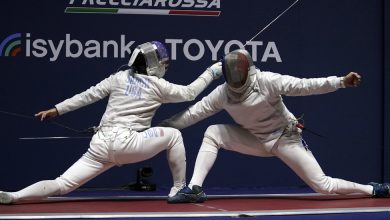Far From the World Cup, the Essence of Argentine Soccer Expands its Reach

BUENOS AIRES — The essence of Argentine soccer can be found late at night, in the circuit of games in barrios outside Buenos Aires.
There, young players for generations have cut their teeth, maybe dreaming of suiting up for the country’s national team, but primarily entertaining late-night and early-morning crowds with an intense, wild talent for the game, playing on whatever patch of ground.
“Potrero” is the term that sums up this system and style, rooted in the informal and improvised games born in the earthy, amateur fields of the 19th century, long before soccer became a profession with billion-dollar clubs and multimillion-dollar salaries. Every Argentine legend has had it in his blood: Alfredo Di Stéfano, Diego Maradona, Lionel Messi. They all kicked around in potreros, and when someone dribbles impressively or scores an amazing goal, it’s common for people to say, “That’s potrero.”

Franco Roldán, 26, said playing potrero helped him sustain his family while he was unemployed.
Now, the games have taken a modern twist.
Today’s young players have expanded the reach of their circuit by streaming the games, and Argentina’s win in the World Cup final this month in Qatar could bring them even more attention.
Even before then, by word of mouth, WhatsApp and Instagram, interest in the circuit’s games had mushroomed from only a few dozen followers before the coronavirus pandemic — mostly coming from the teams’ neighborhoods in the cities ringing Buenos Aires — to thousands of people connected across the country and beyond. Last June, even a Mexican soccer fan page shared a video of La Sub 21, a respected potrero team, and the clip reached 4.4 million views.
There are now some accounts, like Potrero Nato or Corta y al pie, dedicated to showing the best of potrero.
La Sub 21, El Ciclón de Burzaco and other teams sell hundreds of their uniforms every time they release a new one. Potrero jerseys are increasingly visible on Buenos Aires buses and subways.
“Some people write us on social media asking us to play in Patagonia or Córdoba province, but we can’t afford the transportation,” said Franco Roldán, 26, who is known as Franquito and plays for La Sub 21.
While he was unemployed, playing for the club helped sustain his family.
“During the time I had no job, I knew if my team won games I could buy milk for my son,” Roldán, who has a 1-year-old, said.
As a teenager, he played for Atlanta, a traditional second division team. But the club didn’t offer him a professional contract when he turned 18 and Roldán had to quit the dream.
For Alan Matijasevic, 29, and many of his neighbors from Burzaco, a Buenos Aires suburb, El Ciclón is the barrio’s heart. The club was founded by a group of families in 1989 and ever since has offered recreational soccer for everyone 5 to 80 years old, including Matijasevic’s 7-year-old son Gio.
The potrero system works like this: Teams arrange a five-on-five match, compete for a pot, typically around $1,000 put up by the players or sponsors, and the winner takes all. In general, a team organizes a potrero night, which features four or five games starting at 11 p.m. and finishing around 4 a.m. or 5 a.m. Over time, the players have gotten to know each other and many of them might play for a different team every week, depending on which club is short a player.
The games never seem to lack an audience and it is common to see children, even toddlers, playing on the field during halftime of a match, even in early morning hours. The potrero games have become an hourslong social event.
A recent potrero match for Matijasevic started at 7 a.m. and, by the time all the games and cleanup finished, 24 hours had passed.
Susana Andrade Acuña, the ticket seller at every El Ciclón de Burzaco event, has watched players grow up.
“Our club is like a family and I know some of the players since they were shorter than the table I sit at,’’ she said.
Roldán performance in potrero clubs got the interest of the futsal division of Huracán, a premier Argentina soccer club that hired him in January.
Jeremías Píriz, 26, said participating in potrero soccer gave him stability after a trying time in his life.
He played potrero while training for a first division team’s junior squad to get extra money. But in 2019 the club dismissed him for showing up late after potrero games and some months later his 12-year-old brother died of a heart attack.
“It was the end for me. I didn’t want to have nothing to do with anything,” Píriz said.
After hardly doing anything for months, he started running and training again and found his way back to potrero.
“I came back and found a lot of people happy just to see me on the field,” he said. “That was a relief and I promised my brother I’d keep playing for him.”

Recently, the first women’s teams have begun competing in the potrero circuit, including Las Ñeris, Las Flores and Chingolo.
In the end, that “family vibe,” Matijasevic said, is what, after 24 hours in the club, keeps him playing.
Last summer, he recalled, he was away on vacation in a distant province and coming out of a river with his Ciclón de Burzaco jersey on.
Suddenly someone shouted at him: ‘Hey, El Ciclón de Burzaco!”
Locals recognized him as a player and asked him for a picture.
“I was touched and proud of how far our work has gone,” he said. “My club is the best place to refresh my mind and my barrio is the place where I love living.”




